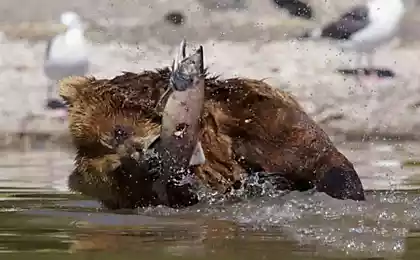509
In chitons eye stone, allowing to see equally well in air and in water

The fact that the coats have unusual eyes, biologists have known for a long time. Researchers at Duke University have decided to carefully examine the vision of these mollusks.
For a start, they cut some of the eye from the surface of the shell and the animals spent their X-ray analysis to study their chemical composition and structure. It was found that the outer shell of the eye consists of chitons aragonite, a form of calcium carbonate.
Then the American biologists conducted an experiment with clams, which allows to find out how well they see. For starters, scientists have placed in the field of chitons black disk with a diameter of three centimeters. In the second part of the experiment, they gradually reduced coverage (at the end it turned out that the same amount of light is blocked, and how much disk).
For the first blackout mollusks react as a danger (folded), but when the reduction in coverage occurred gradually, tunics remained calm.
It turns out that these animals are capable of their stone eyes to determine what is going on around: approaching predator or just a cloud floats in the sky.
The following experiment showed that coats equally well seen, both in water and in air. Probably, it is promoted by the properties of aragonite (birefringence results in a double image), biologists concluded. The researchers suggest that the water mollusk receives the information in the fall of light on some sensitive cells located under the cover of aragonite, and in the air - on the other.
Source: www.membrana.ru
via factroom.ru
Those who live on high floors are aging faster than living on low
12 facts about the French language























